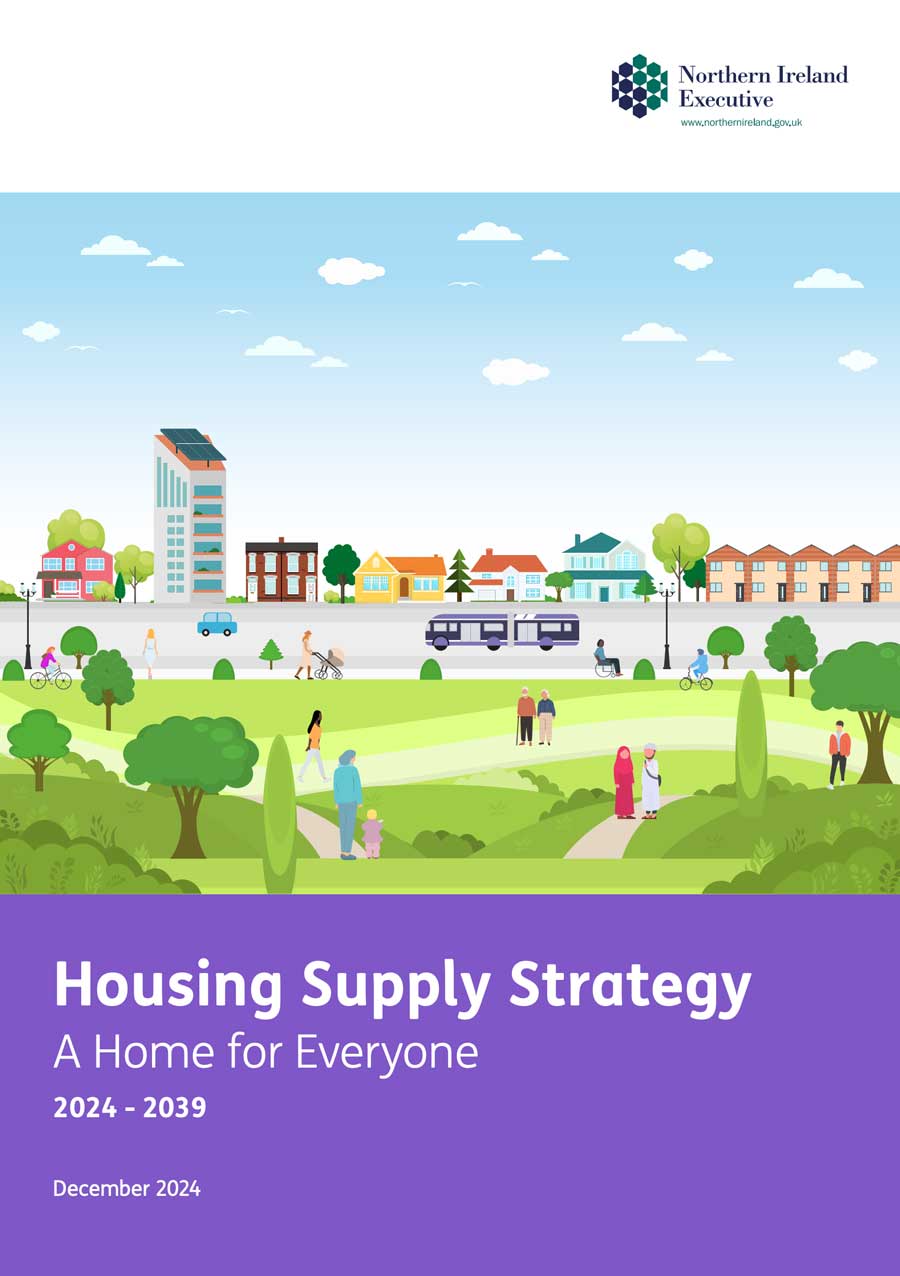Image: Istock
Homelessness: pressures, prevention and pathways forward
What a more successful approach to Northern Ireland's homelessness crisis could look like

HEALTH, CARE & SUPPORT

Nicola McCrudden
Chief Executive, Homeless Connect

Nicola McCrudden
Chief Executive, Homeless Connect
Issue 80 | October 2025
Homelessness in Northern Ireland has reached an alarming level, with frontline services stretched thin and thousands of people living without secure and affordable housing. As the system contends with rising levels of need, limited housing supply and financial pressures, it is increasingly clear that strategic prevention, long-term planning and cross-sector collaboration must form the backbone of any sustainable response. Here is our experience of where we are now and what a more successful approach could look like.
Growing pressure on services
The Northern Ireland homelessness system is under unprecedented strain. As of mid-2025, more than 32,000 households were recorded as having legal homelessness status – an increase of 135% in just a decade. More than 5,200 households are living in temporary accommodation, up from just over 2,000 in 2020. The cost of providing temporary forms of housing, including hotels and B&Bs, has ballooned to £39 million annually.
These emergency responses, while necessary in the short term, absorb a disproportionate share of the budget. They draw vital funding away from more strategic, long-term interventions, such as prevention, wraparound support and new social housing.
households had legal homelessness status in Northern Ireland in mid-2025 – an increase of 135% in a decade
households are living in temporary accommodation – up from just over 2,000 in 2020
cost of providing temporary accommodation per year
“Current legislation only requires the Housing Executive to assist people if they are at risk of homelessness within 28 days – insufficient time to intervene meaningfully.”
Underinvestment in prevention
Homelessness prevention remains under-resourced, despite its proven cost-effectiveness. Current legislation only requires the Housing Executive to assist people if they are at risk of homelessness within 28 days – insufficient time to intervene meaningfully. Homeless Connect and our members are calling for this window to be extended to at least 56 days, in line with best practice in other parts of the UK.
Prevention involves more than just averting eviction. It requires holistic support: advice, financial support, mental health and addiction services, mediation and access to stable housing options. Without robust prevention mechanisms, people fall through the cracks and become entrenched in homelessness, often cycling through temporary accommodation, hospitals and the criminal justice system.
Supply and infrastructure constraints
A chronic lack of affordable housing is one of the primary drivers of homelessness. We need more than 2,200 new social homes per year, but current funding will deliver less than half that target in 2025/26. Rising construction costs and land accessibility are part of the problem, but so too is an ageing and overstretched infrastructure – most notably, the lack of sewage capacity, which has delayed the delivery of more than 19,000 homes.
The Northern Ireland Housing Supply Strategy, approved in late 2024, provides a roadmap for long-term delivery, but implementation has been hindered mainly by inadequate short-term capital funding and capacity issues within infrastructure.
“There is a growing recognition of the value of cross-border cooperation with the Republic of Ireland, especially given the shared challenges across both jurisdictions.”
Cross-sector and cross-border collaboration
The complexity of homelessness demands joint working across government departments, health and social care providers, the Housing Executive, and the voluntary and community sector. No single agency can meet the full spectrum of needs of those experiencing homelessness. In addition to improving internal collaboration, there is a growing recognition of the value of cross-border cooperation with the Republic of Ireland, especially given the shared challenges across both jurisdictions.
The border region, in particular, presents unique challenges, where housing pressures and access to services do not align neatly with administrative boundaries. Individuals may live in one jurisdiction and work or receive services in another, complicating eligibility, support, and data-sharing.
By establishing stronger channels for information exchange, joint training and research collaboration, both jurisdictions could improve outcomes and make better use of limited resources. Shared learning from housing-led approaches, rapid rehousing models and tenancy sustainment initiatives – whether from Dublin, Derry, Lisburn or Louth – can help identify what works and build more resilient structures. Furthermore, practitioners benefit from shared learning opportunities, peer networks and joint problem-solving. Platforms that bring together staff can foster innovation and a stronger sense of collective responsibility.
Equally important is the need to centre the voices of those with lived experience of homelessness. Their insights are vital in shaping services that are realistic, respectful and reliable. People who have navigated the system know best where it succeeds and where it fails. Their experiences provide the clearest guidance on how to make homelessness services more humane and responsive.
Impact of policy decisions
The homelessness system is heavily shaped by decisions made at Stormont and Westminster. The Department for Communities has seen real-terms reductions in funding, placing further strain on key programmes such as Supporting People and social housing development.
Short-term funding cycles and last-minute budget announcements undermine service planning, staff retention and innovation. Institutions focused on crisis management become less able to address root causes, driving up costs and entrenching disadvantage.
To reverse this trend, political leaders must commit to:
- increasing multi-year investment in social housing and homelessness support services
- strengthening homelessness legislation and enabling a prevention duty
- funding Housing First and wraparound support
- improving infrastructure, especially wastewater
- facilitating cross-border collaboration and shared learning
- embedding lived experience and co-production into policy and strategy
Next steps
The homelessness crisis is not inevitable. With the right investments, legislative reform and collaboration homelessness can be reduced and prevented. Stronger partnerships, a focus on prevention and bold action to address housing shortages must all be part of the solution. Charities, housing providers, policymakers and communities have an opportunity to learn from one another and build a system that offers dignity, stability, and hope to everyone who needs it.


